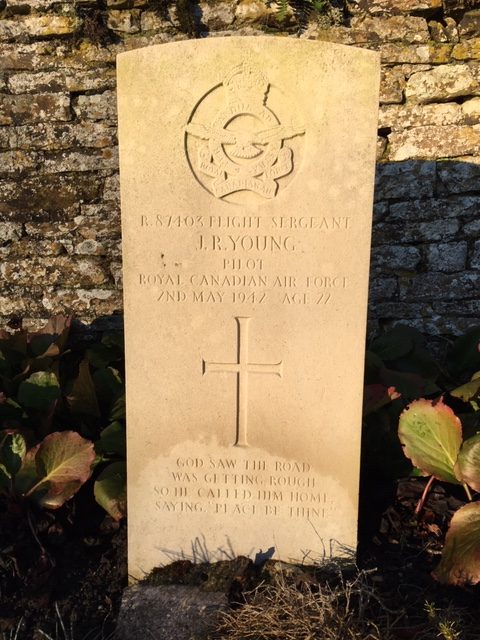In early 1945 the Luffwaffe had lost air battle over German soil. However, the application of air power can result in local impacts. On the night of 3/4 March (the 2000th night of the war) approximately 200 Junkers JU88 night fighters were sent to follow the bombers back to England. This offensive action took the British defences by surprise and 20 bombers were shot down, including 5 training aircraft.
The 5 training aircraft had been on a diversion flight consisiting of 95 aircraft on a ‘diversionary’ sweep. This was a mock raid designed to deceive the German air defences and increase the mission success of the main force attack. Wikepedia catalogues the British and German losses (see link in references).
Two of the losses were 1651 Operational Conversion Unit’s (OCU) Lancasters flying from RAF Woolfox Lodge. So whilst still in training to become operational crews, they were shot down by a JU88 nightfighter.
Of the 2 crews of 7 men, there was only one survivor only Sgt J Thompson. Lancaster ND387 was shot down at 0115 and crashed at Stretton and Lancaster JB699 was shot down at 0135 and crashed near Cottesmore. It is clear that the RAF were not expecting the attack as RAF aircraft were flying with navigation lights on, until warnings were received over the radio. Also airfield lights were on and only doused when warning was received.
The conversion unit had 13 Lancasters on strength in March 1945 and to lose 2 crews within sight of the airfield must have been devastating to the unit. It is difficult to imagine the impact. The risk of being shot down on operations must have been known, but to see your fellow crews being shot down as they close the base circuit, must have been tough for those left behind.
In addition to the Woolfox casualties, 1654 OCU flying from RAF Wigsley, (Nottinghamshire) lost 2 Lancasters (losing 8 killed out of 14 crew) and 1664 OCU flying from RAF Dishforth (Yorkshire) lost 1 Lancaster and all 7 crew were killed.
This all happenend when perhaps the end of the war in Europe was in sight? The Allies had been on German soil since September 1944, the Battle of the Bulge was over, and the Allies were on the way to cross the Rhine. Germany surrendered on 7 May 1945.
The Woolfox casualties were buried at various cemeteries, 6 in Cambridge City Cemetery, others in Scotland and Bradford. It is not known where the 2 New Zealanders and the Australian from the crews are buried. The casualties are listed in Bomber Command Losses 1945 – see below and more detail is provided in Volume 8 – see lower down the page:

That night the Bomber Command effort was split between 3 missions:
- Kamen. 234 aircraft (201 Halifaxes, 21 Lancasters and 12 Mosquitos) to attack the synthetic oil refinery at Bergkamen. The target was destroyed and no aircraft were lost over Germany.
- Dortmund-Ems canal. 212 Lancasters and 10 Mosquitos attacked the Ladbergen viaduct, whichwas breached in 2 places and put out of action. 7 Lancasters were lost.
- Support and Minor Operations. 95 aircraft in a diversionary sweep. 64 Mosquitos to Berlin and 32 to Wurzberg. 61 radio counter measure sorties. 29 Mosquito patrols. 31 Lancasters minelaying in Kattegatand Oslo fjord. 17 aircraft on resistance support missions. The Mosquito patrols I assume were doing what the Germans were doing and looking for night fighters, it is unknown what sucess they had.
- Summary – 785 sorties. 8 aircraft lost over Germany and the sea, 20 aircraft shot down by intruders over England, a total casualty rate of 3.6 percent. 15 Halifaxes and 12 Lancasters (crews of 7 = 189 crew airborne). Wikepedia entry also lists 3 USAAF Flying Fortresses and an RAF Hudson shot down or damaged?
- The Luffwafe lost 25 night fighters and the following night (4/5 March) a smaller effort was launched, but it was ineffective.

References: Bomber Command Losses 1945 V6 by W R Chorley. Bomber Command Losses Heavy Conversion Units V8 by W R Chorley. Bomber Command War Diaries by Martin Middlebrook and Chris Everitt. Wings over Rutland by John Rennison. Wikipedia https://en.wikipedia.org/wiki/Operation_Gisela





















